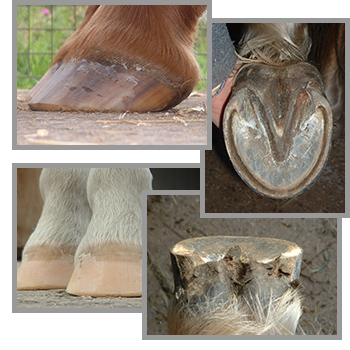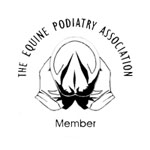Welcome to Hoof-Help

This website aims to give some information on how, as an Equine Podiatrist, I work, and how your horse may benefit from a barefoot approach. You can follow the links on the menu to find out more and I am happy to answer questions and discuss all aspects of further with you.
What an Equine Podiatrist Does
An Equine Podiatrist – or EP for short - is a trained specialist in barefoot hoofcare. Equine Podiatry is the scientific study of the anatomy and physiology of the equine hoof. An EP understands how to influence this to achieve optimum hoof health for any individual horse.

A holistic approach is needed to attain this – you can be the best trimmer in the world, but unless many factors are taken into consideration, you will not get the best feet! The hoof is a highly complex structure made up of several components which each have a crucial part to play in the correct function of the hoof as a whole. It is only by taking the roles and relationships of all of these component structures into account, that optimum health, function and therefore usability can be achieved.
Some of the main factors affecting and influencing hooves are nutrition, the environment, management, biomechanics, type of work done and surfaces available. An EP has hoof specific training in all of these areas, and can make appropriate recommendations to enable the horse to develop the best hooves possible - this is why an EP approach can really make a difference.
As well as improving general hoof health, it is often successful in helping with ‘problem’ hooves and conditions such as laminitis and navicular, where working alongside the vet may be appropriate. I may also advise more specialized help from other professionals such as physiotherapists, saddle fitters etc, as influences from problems in these areas can also impact upon the hooves.

The trim is safe, balanced and non-invasive, and always puts the comfort of the horse first. Written notes and photographic records are taken at every visit to monitor change, and also help our further research and understanding.
Members of the EPAUK all have formal qualifications, work to a code of conduct, have governing rules, and are required to undertake 40 hours per annum of CPD training – more information on all of this can be found on the EPAUK website via the contact menu.
